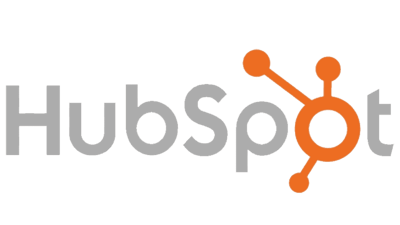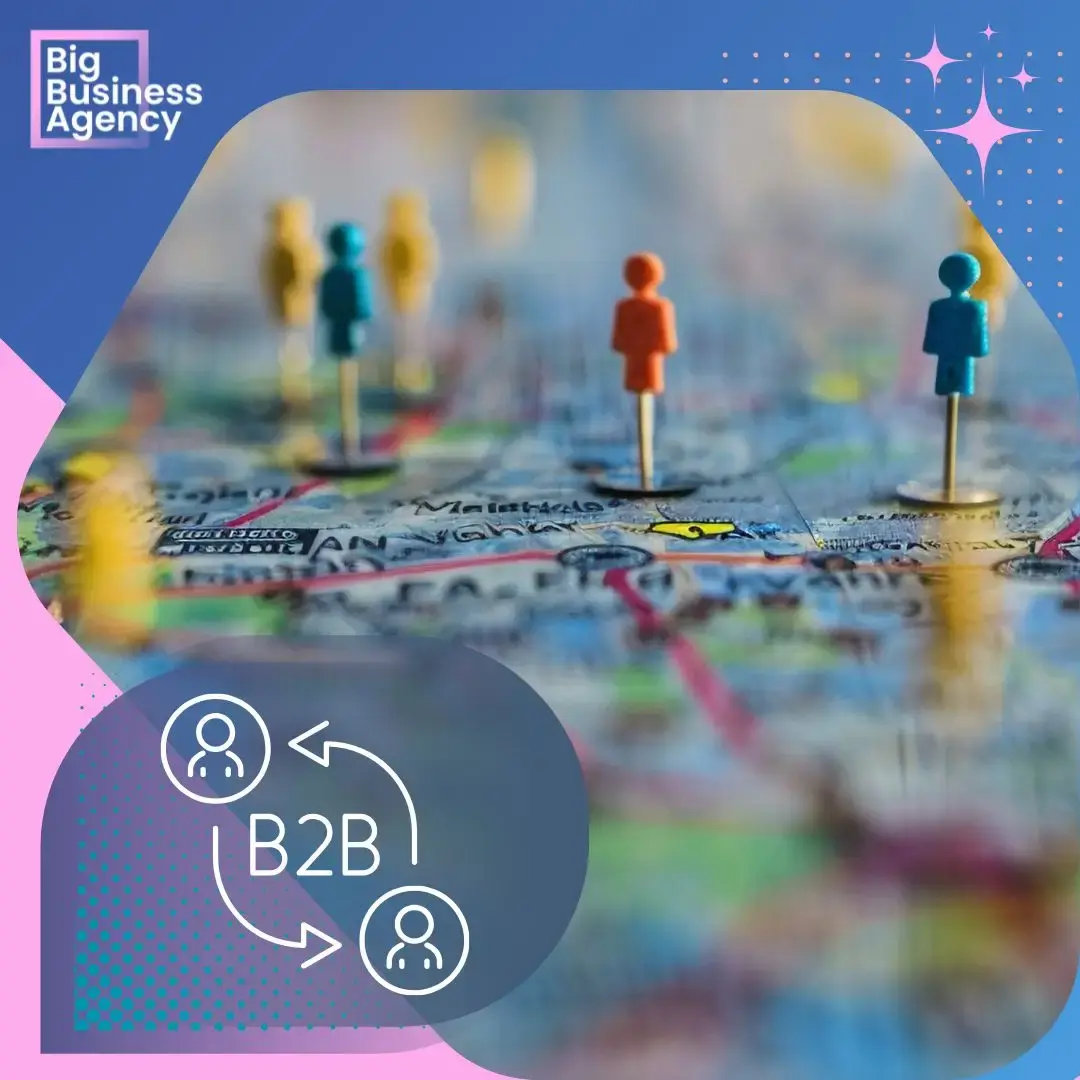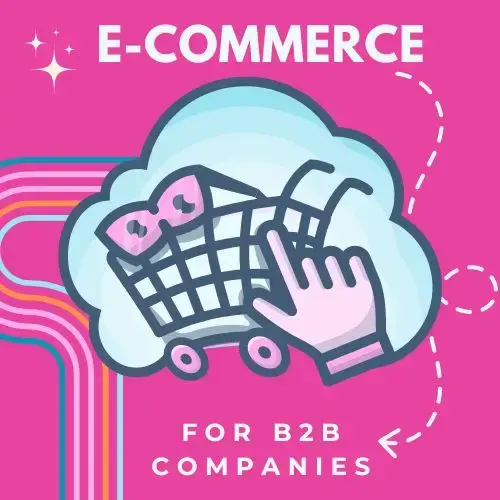6 min read
Customer Journey Stages
McKinsey discusses the Customer Decision Journey, noting that B2B companies using this view of the journey boost sales by an average of 5 -10...

B2B companies that segment their market see up to a 10% increase in conversion rates and 15% higher customer retention. [McKinsey]
Yet, despite the clear ROI, many still rely on one-size-fits-all strategies. In an era where personalisation drives performance, segmentation isn’t optional - it’s essential. Backed by data and driven by results, Market Segmentation is the secret weapon separating high-growth companies from the rest.
But how does this work in real-world applications, especially in B2B?
Contents
What is Market Segmentation and Why Does it Matter?
The Four Main Types of Market Segmentation
Advanced Market Segmentation Strategies
The Benefits of Market Segmentation
How to Conduct Market Segmentation for your Business
Market Segmentation Challenges and How to Overcome them
Market Segmentation v Customer Segmentation, what's the difference?

Market Segmentation is dividing a broad customer base into smaller, more defined groups with similar characteristics. This enables businesses to tailor their sales and marketing efforts, improve customer engagement and ultimately increase sales.
The goal of segmentation is to customise sales and marketing strategies to align with your Ideal Customer Profile, targeting those most likely to purchase your product or service.
Market segmentation is essential for businesses because it allows them to:
The significant challenges businesses encounter with data overload are unprecedented. In most cases there is a constant struggle to accurately identify and comprehend the diverse needs of their target audience.
It can be overwhelming to sift through vast amounts of customer information. The olds methods of organising this data are time-consuming and labor-intensive. Market segmentation offers a solution. By dividing a broad target market into smaller, more manageable groups based on shared attributes, businesses can gain a deeper understanding of their audience.
By segmenting audiences based on actionable criteria and leveraging data insights, businesses can deliver targeted messages that resonate with specific audience segments. It ultimately comes down to understanding your buyers behaviours, their demographics and creating personas that hold insights into your customer journey, allowing you to deliver tailored solutions to different groups.
The advantage is clear, scalable personalisation is achievable through data-driven marketing segmentation. Moreover, the integration of AI marketing is clearly beneficial, with more than 70% of marketers reporting improvements in customer segmentation through its use.

Demographic segmentation divides customers based on measurable attributes such as:
For example, a software company might market its enterprise CRM differently to its mid-market offering
This type of segmentation groups customers based on their physical location:
A TIC Services firm, for instance, would market differently in a remote oil field than in London.
This segmentation focuses on values, attitudes and lifestyles. It looks at:
Premium instruments, for example, target customers who value premium services and support.
This categorises customers based on their actions, such as:
An example is an Accounting Firm recommending services based on financial performance.

Similar to demographic segmentation but focused on businesses:
A SaaS company might target startups with flexible pricing and enterprises with premium services.
This groups customers based on their tech stack, such as:
Tech providers can use this to offer integrations tailored to their customers' existing tools.
Artificial Intelligence (AI) meticulously analyses historical customer behaviour data to accurately predict future needs and preferences, empowering businesses to automate their marketing initiatives and refine their outreach strategies with precision.
By harnessing AI's predictive prowess, companies can foresee customer demands before they materialise, crafting highly personalised marketing messages that deeply resonate with individual clients. This strategic approach not only boosts the effectiveness of marketing campaigns but also significantly elevates customer engagement and satisfaction by delivering pertinent content at the optimal moment.
Consequently, businesses can cultivate more robust customer relationships, enhance conversion rates and secure a competitive advantage in the marketplace.

In B2B marketing, it's essential to remember that there's always an actual person at the receiving end of your message. Persona segmentation is key for B2B marketing as it enables you to deliver tailored messaging that truly resonates.
By leveraging personas, companies can craft personalised content that addresses their audience's challenges and targets specific segments within their market.
Whether aiming to engage the CEO or the frontline specialist, this segmentation approach ensures that communication is always aligned with the unique pain points of each role.

Who truly benefits from your offerings? Dive deep to define your Ideal Customer Profile (ICP). Understand what sets your solution apart, how your customers make their buying decisions, and the alternatives they consider. This step ensures you're not just reaching an audience, but connecting with the right one.
Harness the power of data by employing tools and methods such as desk research, networking, interviews, CRM analytics, and surveys. The goal? To gather rich insights into how your market operates, how it identifies needs, and the discussions it's having. This comprehensive data collection is the backbone of informed decision-making.
Now, it's time to segment. Group your customers based on shared characteristics - buying behaviours, how they use your solutions and the challenges they face that your product addresses. Evaluate their purchasing power and the total addressable market (TAM) to focus your efforts where they count the most.
Develop bespoke marketing and sales strategies for each segment. Identify the best channels to reach decision-makers, understand the events that drive them, and tailor your sales and marketing tactics to align with their decision cycles. From ABM and events to digital marketing and direct outreach, ensure every tactic supports the buyer's journey.
The final step is all about agility. Launch your strategies, monitor their effectiveness and continually optimise to stay ahead. Adjust based on performance metrics and feedback to ensure your market outreach remains relevant and impactful.

Market Segmentation provides a wealth of practical applications that improve outcomes. For instance, in email marketing, leveraging segmented campaigns can significantly boost open rates and ultimately increase revenue. Let's explore two cases of businesses leveraging segmentation.
HubSpot employs a sophisticated approach by utilising firmographic and behavioural segmentation to tailor its offerings uniquely for small and large enterprises. By analysing firmographic data, HubSpot can identify key characteristics such as industry, company size, and revenue, allowing it to customise its solutions to meet the specific needs of different business types.
For small businesses, this might mean offering flexible pricing plans and user-friendly tools catering to limited resources and smaller teams. In contrast, for larger enterprises, HubSpot can provide advanced features and premium services that align with their complex operational requirements and larger scale.
Additionally, behavioural segmentation enables HubSpot to track and understand its users' actions and preferences, allowing for a more personalised experience. This dual segmentation strategy ensures that each customer segment receives a tailored approach, enhancing user satisfaction and driving business growth.

Amazon employs sophisticated algorithms to segment its customers by analysing their purchase history and browsing behaviour. This data-driven approach allows Amazon to understand individual preferences and shopping patterns, enabling the company to accurately recommend products.
By leveraging this information, Amazon not only enhances the shopping experience by offering personalised suggestions but also increases the likelihood of conversions.
This strategy is a cornerstone of Amazon's success, as it continuously refines its recommendations to align with evolving customer interests, thereby fostering customer loyalty and driving sales growth.
 To ensure the integrity and reliability of your market segmentation efforts, it is crucial to use dependable data sources. Regularly updating your data is essential to maintain its accuracy and relevance, allowing you to make informed decisions based on the most current information available. This practice not only enhances the precision of your segmentation but also strengthens the foundation of your marketing strategies.
To ensure the integrity and reliability of your market segmentation efforts, it is crucial to use dependable data sources. Regularly updating your data is essential to maintain its accuracy and relevance, allowing you to make informed decisions based on the most current information available. This practice not only enhances the precision of your segmentation but also strengthens the foundation of your marketing strategies.
To avoid confusion and ensure the effectiveness of your segmentation strategy, it is important to establish clear and distinct boundaries between different customer segments. By carefully defining the unique characteristics and needs of each segment, you can tailor your marketing efforts more precisely, reducing the risk of overlap and ensuring that each group receives targeted and relevant messaging.
In today's data-driven world, achieving the right balance between personalisation and privacy is paramount. It is essential to comply with data protection regulations, such as GDPR or CCPA, while still delivering personalised experiences to your customers. By implementing robust data privacy measures and being transparent about data usage, you can build trust with your audience and provide personalised content that respects their privacy preferences.
Market Segmentation categorises the entire market into distinct groups with shared characteristics, whereas Customer Segmentation zeroes in on your current customer base, organising them by similar needs and behaviours to customise marketing and engagement strategies effectively.
Customer Segmentation involves categorising and organising customers based on shared characteristics such as age, industry, and gender. This approach allows for the personalisation of sales, service and marketing strategies to meet the specific needs of distinct groups.
The outcome is a significant enhancement in customer loyalty and conversion rates.
Whether you want to gain a competitive edge, target customers better with paid campaigns or improve your email campaigns, HubSpot is one of the very best software options on the market.
HubSpot provides an extensive array of tools that significantly bolster market segmentation initiatives, empowering businesses to achieve precise targeting and personalisation. By harnessing HubSpot's advanced CRM capabilities, companies can systematically organise and analyse customer data, enabling the creation of detailed segments based on firmographic, demographic, technographic, and behavioural attributes.
This segmentation facilitates the development of bespoke marketing strategies that resonate with specific audience groups, thereby enhancing engagement and conversion rates.
Also, HubSpot's automation features streamline the segmentation process, conserving time and resources while ensuring that marketing efforts remain both effective and scalable. HubSpot make this easy with AI assistants to guide your segmentation set up and segmentation analysis.
With real-time analytics and reporting, businesses can continuously refine their segmentation strategies, adeptly adapting to market dynamics and customer preferences.
Summary
Market Segmentation done right can be a powerful growth strategy. Understanding your audience can create tailored experiences that drive engagement, conversion and loyalty.
Businesses that invest in advanced segmentation are positioned to outperform competitors in an increasingly data-driven B2B Sales environment.
By developing and implementing an effective market segmentation strategy, businesses can deliver the right message to the right audience, ensuring sustained success in an evolving market landscape.

 Market segmentation is key to unlocking more personalised, efficient and impactful sales and marketing campaigns. By understanding your audience and targeting the right customers, you can drive higher engagement and growth.
Market segmentation is key to unlocking more personalised, efficient and impactful sales and marketing campaigns. By understanding your audience and targeting the right customers, you can drive higher engagement and growth.
At Big Business Agency, we leverage advanced segmentation techniques to help businesses maximise their revenue growth potential, sales & marketing ROI and close Big Deals.
Let’s take your segmentation strategy to the next level.
Contact us today for a complimentary consultation and see how we can help you target the right customers with precision!
Book your free consultation now!
Firmographic segmentation is highly effective as it focuses on company size, industry and needs.
Start with basic demographic and behavioural segmentation using free or low-cost analytics tools.
CRM software like HubSpot, analytics tools like Google Analytics and AI-based predictive analytics platforms.
At least once a year, or whenever major market changes occur.
Failing to act on segmentation insights. Data without action is just numbers.
Market segmentation empowers you to identify and qualify the right customers for your product or service, enabling you to deliver personalized marketing campaigns that resonate with their specific needs.
An effective market segmentation strategy enhances your sales and marketing ROI, expands your customer base, reduces customer acquisition costs and strengthens brand loyalty.
Related Articles
Sales Automation and AI Transforming B2B Sales
Define your Go To Market Strategy for a clear path to growth
B2B Market Segmentation Research
AI powered sales and marketing reach new heights with generative AI
AI a breeze with new HubSpot tools
HubSpot Academy Free Course: Customer Segmentation
Experience led growth: A new way to create value

6 min read
McKinsey discusses the Customer Decision Journey, noting that B2B companies using this view of the journey boost sales by an average of 5 -10...

Digitising B2B contracted customers with an easy-to-use integrated eCommerce CRM can transform your business with simplified operations. Imagine one...

HubSpot Partner located in Dublin and Belfast specialising in large complex Enterprise Sales through to Customer Service Operations Management...